All Activity
- Past hour
-
-
Those cicada/'saw bugs' are out there deforesting already and it's not even 9am... Heh, it 'sounds' like a hot day is in the mail.
-
Records: Highs: EWR: 98 (2021) NYC: 97 (1944) LGA: 98 (2021) JFK: 92 (1970) Lows: EWR: 54 (1954) NYC: 55 (1889) LGA: 56 (1979) JFK: 55 (1979) Historical: Posted August 13, 2024 Records: Highs: EWR: 98 (2021) NYC: 97 (1944) LGA: 98 (2021) JFK: 92 (1970) Lows: EWR: 54 (1954) NYC: 55 (1889) LGA: 56 (1979) JFK: 55 (1979) Historical: 1752 - The following is from the Journals of the Rev. Thomas Smith, and the Rev. Samuel Deane, published in 1849. In the evening there was dismal thunder and lightning, and abundance of rain, and such a hurricane as was never the like in these parts of the world. This hurricane struck Portland, 1752: Portland, Maine: “It blew down houses and barns, trees, corn and everything in its way. Such a hurricane as was never the like in these parts of the world” — Rev. Thomas Smith (Ref. WxDoctor) Maine. 1778 - A Rhode Island hurricane prevented an impending British-French sea battle, and caused extensive damage over southeast New England. (David Ludlum) 1901: Three inches of rain fell in 40 minutes during the morning at Rancocas, NJ. A similar event occurred in the same region 99 years later. (Ref. Wilson Wx. History) 1910: Electrical storms ignited numerous forest fires in the Bitterroot Mountains of Idaho. Entire towns were burned and 163 people died, including 78 firefighters. (Ref. AccWeather Weather History) 1933 - The temperature at Greenland Ranch in Death Valley, CA, hit 127 degrees to establish a U.S. record for the month of August. (The Weather Channel) 1936 - The temperature at Seymour, TX, hit 120 degrees to establish a state record. (The Weather Channel) 1936: The temperature at Seymour, TX hit 120° to establish a state record. Altus tied the Oklahoma state temperature record by reaching 120°. The high of 109° tied the record high for the month of August at Dodge City, KS. From the 12th through the 24th, there was a record 13 days on which temperatures reached 100° or more at St. Louis, MO. (Ref. The Weather Channel) (Ref. WxDoctor) 1955 - During the second week of August hurricanes Connie and Diane produced as much as 19 inches of rain in the northeastern U.S. forcing rivers from Virginia to Massachusetts into a high flood. Westfield MA was deluged with 18.15 inches of rain in 24 hours, and at Woonsocket RI the Blackstone River swelled from seventy feet in width to a mile and a half. Connecticut and the Delaware Valley were hardest hit. Total damage in New England was 800 million dollars, and flooding claimed 187 lives. (David Ludlum) 1955: The greatest DAILY precipitation to occur in the month of August or any month in Richmond, Virginia was 8.79 inches from Hurricane Connie. (Ref. Richmond International Airport Records) 1982: Sparta, WI recorded their coldest August temperature with 32°. This is also their earliest freezing temperature. La Crosse, WI set a record low with 46 °F.: (Ref. Wilson Wx. History) 1985: The "New Lisbon Tornado" F2 tornado set down south of Kendall, WI, destroying a barn and damaging a home before moving northeast into Juneau County. The tornado moved from the countryside into New Lisbon, ripping through a trailer court on the northern edge of town before dissipating on the north edge of Castle Rock Lake. A couple was killed and 22 others were injured in Juneau County. Numerous trees and power lines were downed, including 100 acres of forest at Buckhorn State Park. Over $620,000 in damage occurred. (Ref. Wilson Wx. History) 1987 - Early afternoon thunderstorms in Arizona produced 3.90 inches of rain in ninety minutes at Walnut National Monument (located east of Flagstaff), along with three inches of pea size hail, which had to be plowed off the roads. (The National Weather Summary) (Storm Data) 1988 - Fifteen cities in the northeastern U.S. reported record high temperatures for the date. Youngstown OH reported twenty-six days of 90 degree weather for the year, a total equal to that for the entire decade of the 1970s. (The National Weather Summary) 1989 - Thunderstorms were scattered across nearly every state in the Union by late in the day. Thunderstorms produced wind gusts to 75 mph at Fergus Falls MN, and golf ball size hail and wind gusts to 60 mph at Black Creek WI. In the Chicago area, seven persons at a forest preserve in North Riverside were injured by lightning. (The National Weather Summary) (Storm Data) 1993: The Great Mississippi River Flood continued as flood waters flowing past Tarbert Landing, , MS reached 832,000 cubic feet per second, which is nearly 4 times the normal August flow. (Ref. AccWeather Weather History) 1999: Severe thunderstorms developed in west central Illinois during the early evening, and moved to the Indiana border during the next several hours. Winds gusting over 80 mph caused over $50 million dollars in crop damage to Schuyler, Mason, Menard, Logan, Cass, Morgan and Scott Counties. Miles of power lines were blown down in Cass County, and numerous trees were damaged through the area. (Ref. Wilson Wx. History) 2000: Three inches of rain fell in 40 minutes during the morning at Rancocas, NJ. A similar event occurred in the same region 99 years before. (Ref. Wilson Wx. History) 2001: An Amelia County, VA man was struck and injured by lightning in his home after lightning hit a porch railing and jumped to the door he had been holding. (Ref. Lightning - Virginia Weather History) Overnight rains up to 8.4 inches in Sussex County, Delaware led to failure of a dam on Hearns Pond during the early morning. Historic Hearns and Rawlings Mills were heavily damaged, along with roads and buildings, with damage at $1.1 million dollars.(Ref. Wilson Wx. History) 2004: Hurricane Charley was the third named storm and the second hurricane of the 2004 Atlantic hurricane season. Charley lasted from August 9 to August 15, and at its peak intensity, it attained 150 mph winds, making it a strong Category 4 hurricane on the Saffir-Simpson Hurricane Scale. It made landfall in southwestern Florida at maximum strength, making it the most powerful hurricane to hit the United States since Hurricane Andrew struck Florida in 1992. 2004: Bonnie made landfall as a 45 mph (72 km/h) tropical storm just south of Apalachicola, Florida on August 12. It accelerated northeastward, and became a remnant area of low pressure on August 14 to the southeast of New Jersey. 2005 - A tornado strikes Wright, Wyoming, a coal-mining community, killing two and destroying 91 homes and damaging about 30 more in around the town.
-
And once the system becomes convectively active again (as it did last night in the southern part of the system) we’ll have to see if that tugs the LLC in one direction or another temporarily.
-
It’s underdispursive but you get the picture.
-
yup...something to certainly watch for them and as you've stated a few times they have been a real magnet these past few years. Something which could also end up heavily influencing the weather pattern here for the last week of August.
-
Well..at least you guys saved me (us) from getting emotionally involved with this
-
Hopefully, we can get the Erin recurve west of Bermuda next week so the WAR gets weakened enough. Big shift to cooler on the EPS for the 18-25. Now the models have a trough along the East Coast instead of a ridge. Longer range will continue to be about the tropics. If we keep getting troughs in the East and tropical systems moving into the weakness, then maybe we can avoid 95+ heat after August 20th. But if the tropical moisture remains east, then the drought conditions will continue expanding. It’s already been the driest summer on record for spots like BDR. The tropics will continue to be the wild card into September. Since a continuing dry pattern and any lack of tropical systems and Eastern trough would allow the ridge to expand again. So the pattern could be mid-August warmth…late August closer to average…early September rebound in temperatures if we stay dry. But enhanced tropical activity in early September could push back against the heat by lowering heights over the Western Atlantic. Cooler trends for August 18-25 New runs Old runs
-
Another MCS rolled through eastern Iowa overnight. I received 0.82". My six-week total is about 11.5". It is very green around here.
-
I know tropical is an imby sport to most here, but some do forget that we have Atlantic Canada posters too. While the pattern isn’t conducive for the EC, the maritimes have more wiggle room and NS and especially Newfoundland are still squarely in watch territory right now. The exact parabolic curve matters to them.
-
Yesterday’s 1.94” brings the monthly total to 6.54” here. Incredible flooding in parts of Raleigh yesterday like we haven’t seen in a very long time. It all came down in about 2 hours and some areas got 5-6” in that time
-
I'm with Kevin, I don't see all that much Thursday, probably northwest and mostly northwest of our region...back more into NY like around Albany and into VT. Probably be a lot of isolated or scattered stuff, nothing widespread.
-
75 / 69 - most humid day in a week or so. Upper 80s / low 90s. Tomorrow PM and Thursday pending on clouds and rain / showers (0.25 - 0.50) continues the heatwave or makes a heatwave for others. Continues warm - hot through Monday or Tuesday next week as Erin approaches and then gets the big hook out to sea as currently projected. Ridge backs west similar to the opening week of August in the 8/20 - 8/25 period, with the Atlantic ridge nearby - should see a warmer week by the 25/26th, and see if the Atlantic ridge exceeds most forecasts as has been the tendency. 8/12 - 8/18 : Warm - hot / humid - Strongest heat Sunday/Monday 8/19 - transition day pending on trough/front Erin approaches and hooks northeast Out to sea 8/20 - 8/25 : RIdge back west - cooler period - near normal to below (similar to 8/1 - 8/6) 8/26 - Beyond : Warmer / some potential heat
-
I mean…this says it all.
-
Appreciate your model summaries for those of us on the run. Nice to get a quick summary when I am in the road with minimal time to check the latest guidance. Thanks!
-
I wouldn't worry too much about where the storm is relative to guidance right now (too far north, south, etc). Erin is still in the initial phases of development and organization and there is going to be a lot of wobbling going on. Once Erin gets closer to hurricane state with a more well-defined center. Anyways rather minute because does it really matter if it starts recurving at 60W or 70W...the pattern over the East its going to get scooped OTS but yes Atlantic Canada can't be ruled out. This is 0.000000000000000001% for East Coast.
-
I've got a better chance w/ the random pop up than the first part.
-
Finally figured it out..... good
-

Central PA Summer 2025
Mount Joy Snowman replied to Voyager's topic in Upstate New York/Pennsylvania
Low of 68. Perhaps someone gets lucky today with a random pop-up. Much better chance late tomorrow. -
We pray. The well isn’t dry yet, but the pressure has been declining after laundry and watering the plants. Bring back the dews.
-
Like was said 8 days ago or whenever it was. Nothing's changed since, unfortunately, for TC enthusiasm. Unless there is a west oriented -D(NAO),whilst a semi-persistent trough positioned/repositions along 90W, any outlook for bringing TCs up along the EC is not well-enough correlated using climatology. Any depiction at D8+ ( go wonder...) is more likely based on model 'beta-drift', a force that emerges by a complex interaction that is too esoteric to get into but it pulls systems toward the NW. Most of the time, the other forces are strong enough that the beta scaling doesn't get noticed, but at long ranges in the guidance... the resolution for those is lost and that leaves beta as proxy over cyclone motion. So you get wonky aspects like a TC tunneling through a ridge with no steering fields. In other words, ...not likely to happen. Doesn't stop the slew of posts in here warning civility of impending doom [place eye rolling emoji here], no but hey. Nothing wrong with living in the realm of model fantasies. People need their distractions. So long as it's kept separate. I suppose what annoys others is when it's apparently not kept separate. Some don't know any better but have access to the tech. This is where society gets delicious.. the phenomenon of bulk density populace having access to information. Uh oh.. digression formulating. Information is like gasoline. Highly volatile substance that has explosive capacity. Normally, it is fed in careful predetermined doses to a machine that converts that potential energy to turn its gears..etc. But, the modern man ... several generations deep after the Industrial Revolution, has dumbed down to dangerously detached and increasingly dysfunctional machinery in the head (deferential and differential objective analytic intelligence, but we won't go there for now). So the dosing of information vastly surpasses what thee machine can really consume ... So what is left? a ton of volatility and explosions ( these are metaphors, btw - ) taking place. One such explosion: We've gotten the U.S. into a state of teetering social order. Floating a proverbial lit match under the Constitution by voter mentality-machinery that not just prefers fake news and appeasing information over reality, but has tons of access to enormous fuel with no constraints on dosing.
-
- Followup to above: Per the 5AM advisory, Erin dropped back down slightly to 17.4N with a 265 degree heading. The new track has a low point of 17.0N tomorrow instead of 17.1N. The 17.0N will be a key latitudinal benchmark to compare to tomorrow. - The 6Z Icon at 120 is slightly W of that ominous looking for Conus 0Z run at 126. -The 6Z GFS is similar to the 0Z GFS and again goes just NW of Bermuda with a hard hit there. -The 6Z Euro 144 is barely SE of the 0Z Euro 150.
-
-
I literally implied Irma in my last post because of the SW dip. What the bloody hell happened lad
-
I think for some every day this week is going to be in the 90s.



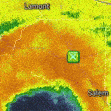



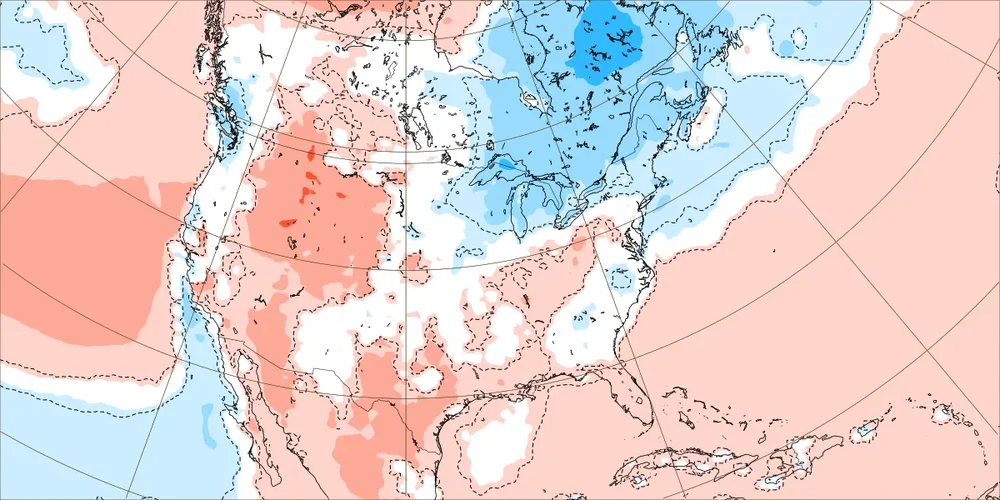
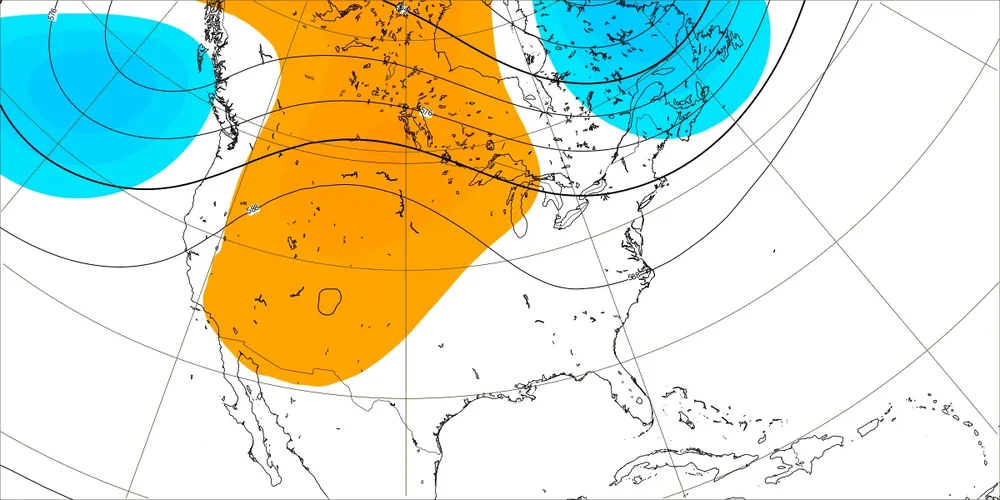
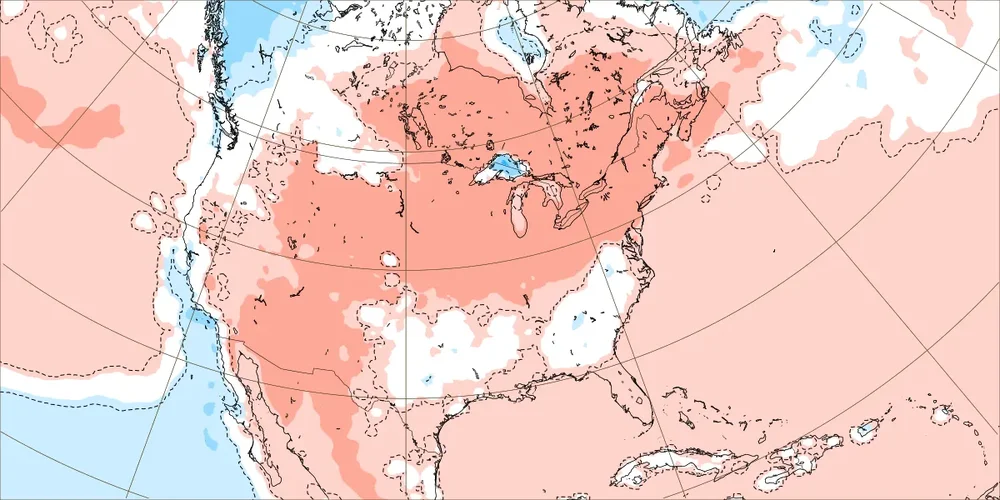
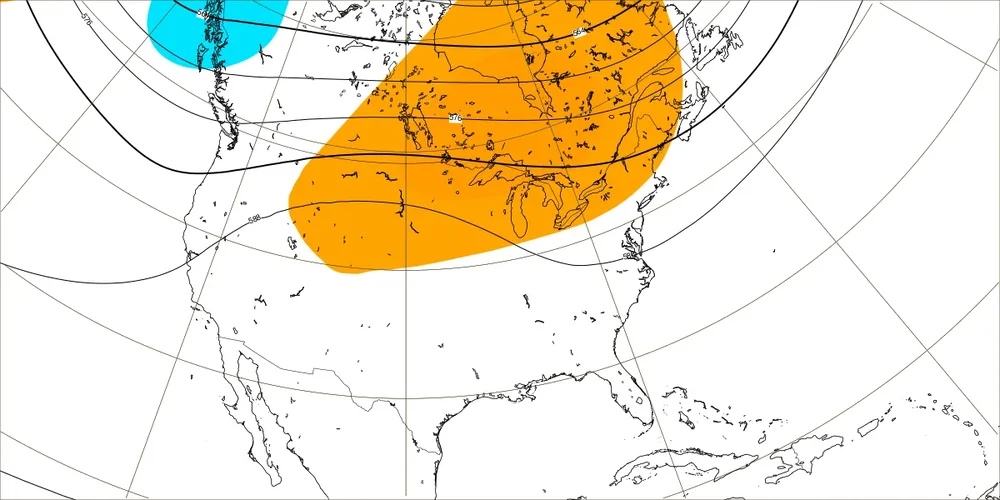

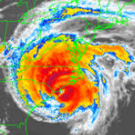







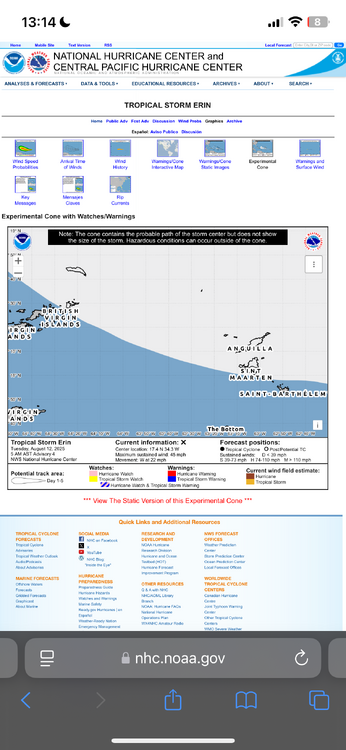
.thumb.png.4150b06c63a21f61052e47a612bf1818.png)